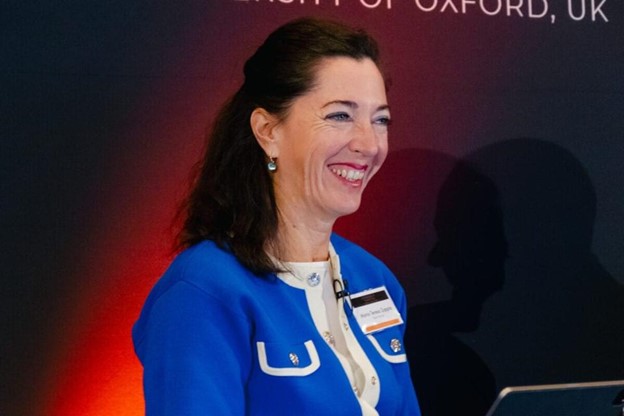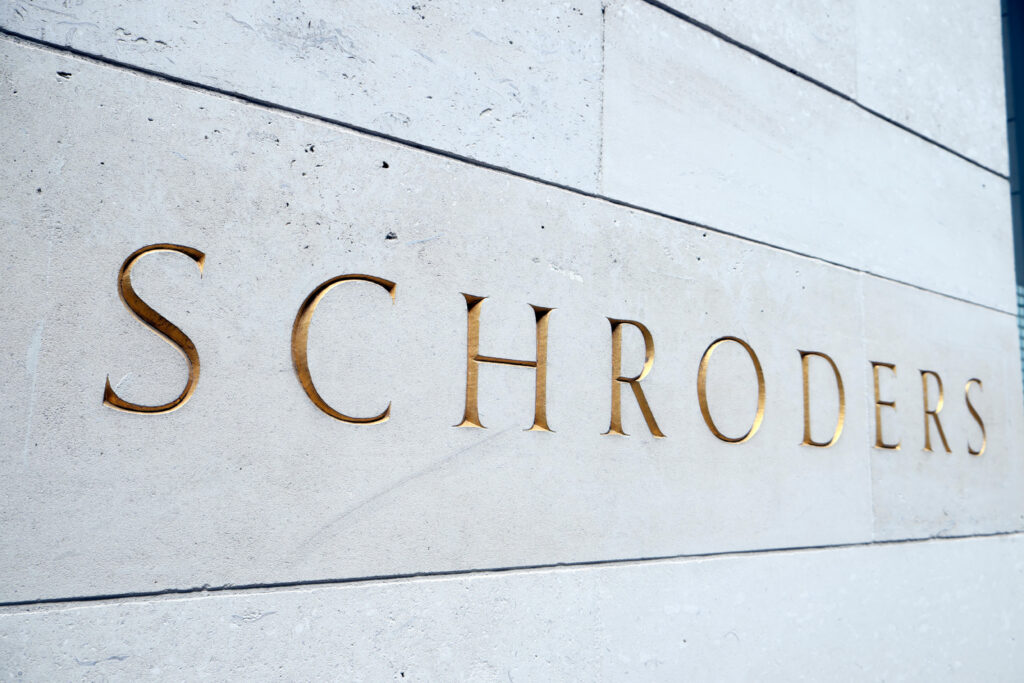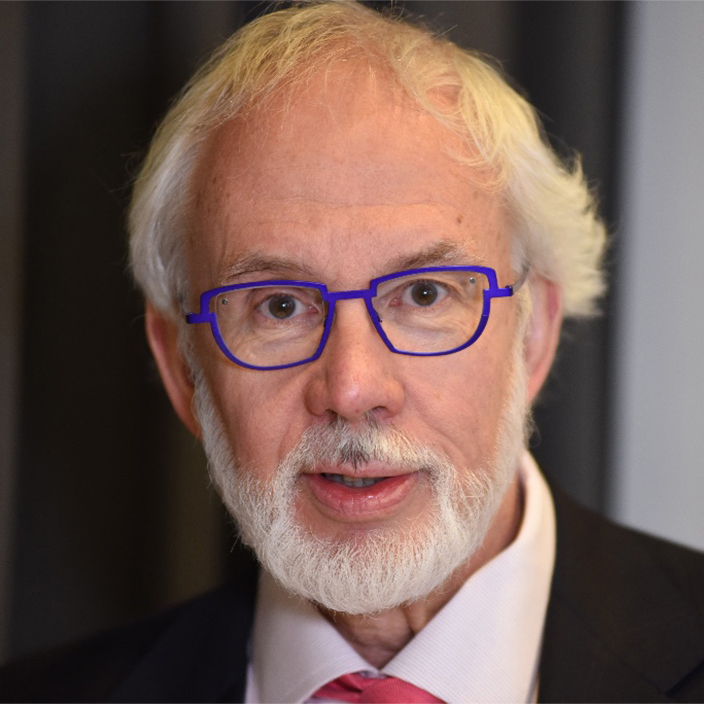I met Maria Teresa Zappia at the top1000funds “Sustainability in Practice” 2023 conference held at Oxford in November 2023. Being the small world that it is, she was on the same panel on “3D investing for impact” with my friend Pete Klop who is my most recent interview. More small world, Maria Teresa and I have a mutual friend in Professor Costanza Consolandi, with whom I’ve written a number of papers together. Maria Teresa is the Chief Impact & Blended Finance Officer and Deputy CEO of BlueOrchard Finance, Head of Sustainability and Impact at Schroders Capital (Schroders private market division), and Global Head of Impact at Schroders. We talked about her work after her panel. I was fascinated and asked her if she’d be willing to do an interview with me. She kindly agreed.

Chief Impact & Blended Finance Officer and Deputy CEO of BlueOrchard Finance, Head of Sustainability and Impact at Schroders Capital (Schroders private market division), and Global Head of Impact at Schroders
Eccles: Maria Teresa, thanks for taking the time to talk with me. To get us started, please tell me about your childhood.
Zappia: My father was a general in the military service in Italy—so called carabinieri. I was born in Sicily and grew up mainly in Florence. I had an interesting combination of Northern and Southern Italy background in my family with my father from Sicily and my mother from the North (Bologna area). My mother was the real general in the family: running the family of four kids as an organised and disciplined business. She was coming from an entrepreneurial family and had a strong sense of getting things done efficiently. My father was the one that was cracking jokes, charming, and flexible. Being the youngest of four I was pretty independent and mainly brought up by my sisters and brother.
Eccles: Sounds like a fun and interesting childhood! What was the family business of your mother?
Zappia: My mother’s family were farmers. But my grandfather started building roads, building channels around plot of lands and bought a lot of heavy machinery and effectively set-up his own construction company with local bank loans. My mother was the eldest and only daughter and he decided that she should be his right arm. She did everything: drive tractors, manage builders and construction workers, negotiate financing with banks and run tenders for public contracts.
Eccles: She sounds like an amazing woman! Please tell me about high school and college.
Zappia: My high school and college were both in Florence. I studied math and science at Liceo Scientifico and then Economics at the University of Florence. I was very interested in development economics. At the same time, I was playing tennis—almost professionally—and learning languages, like French.
Eccles: How did you get interested in developing economics and developing countries?
Maria Teresa: I think it happened because I found my entourage of an Italian middle class Tier 2 city quiet provincial and not stimulating. I started being interested in Africa, Latin America, and generally in emerging markets and their exciting and unknown cultures. My first eye-opening trip was to visit my sister who was back then based in Senegal.
Eccles: What was your first job out of college?
Maria Teresa: I went to the OECD Development Centre in Paris. I was there for less than a year because I got scholarships for a two-year Master of Philosophy in Development Studies at the Institute of Development Studies (IDS) at Sussex University. This was my dream to have a multi-cultural environment where both students and teachers were coming from emerging and frontier markets.
Eccles: You finally got away from that Italy of little provincial towns, and I imagine it was very eye opening! Then what?
Zappia: I applied to the Overseas Development Institute, ODI, sponsored by the UK government that had a two year program in emerging countries for young economists. I was based for two years in the Ministry of Finance of Swaziland (now Eswatini). From there I went to the Asian Development Bank and spent three years in the Philippines. I worked in the transport team and travelled to China, Indonesia, Pakistan, and Central Asia. Back then we were financing roads and highways and travelling to these markets in the late 90s was very exotic!
Unfortunately, the Asian Development Bank did not have back then a lot of space for a young European woman that was outspoken, and I soon realized I had to make a move and so I applied to the European Bank for Reconstruction and Development (EBRD). I joined their resident office in Uzbekistan for three years.

View over the Poi Kalon Mosque and Minaret at the sunset, in Bukhara, Uzbekistan (Photo: iStock)
Bob Eccles: Good Lord. You’ve wandered the world! What was it like living in Uzbekistan?
Maria Teresa: Fascinating! It had become an independent country, but still had a very big Russian community, an excellent education system, and a growing local entrepreneurial middle class. I was the deputy head of the EBRD office and dealt with many commercial banks and small and medium enterprises across sectors and markets (Uzbekistan, Tajikistan, Kyrgyzstan, and Kazakhstan).
Eccles: So you’re like a real person now with clear responsibilities as deputy head of an office. That’s impressive. Where did you go next?
Zappia: The EBRD HQ called me back to the head office in London. I joined the Group for Small Business, which was effectively the team within financial institutions focusing on small and medium enterprises and micro enterprises. There I worked on Central Europe and the Balkans. Mostly private debt financing and capacity building to effectively get financial institutions of different types to lend to micro and SMEs in their own markets.
Eccles: How long did you do that?
Zappia: More than six years. Then I had a big revelation. I thought, “Okay, time to move into the private sector and join a more commercial, lean, and smaller organization.” Thanks to a syndication in Ukraine with BlueOrchard I was exposed to this asset management company and their team in Switzerland. They were fast, entrepreneurial, and innovative. What today we would call a vibrant start up. I moved to Geneva to join BlueOrchard in 2008.
Eccles: Please tell me a little bit about BlueOrchard.
Zappia: BlueOrchard was started in 2001 with the objective to lend commercially to microfinance institutions in emerging markets and support micro, small, and medium enterprises and create jobs and reduce inequality.

Woman hand holding blue colored apple. Isolated on white (Photo: iStock)
Eccles: Where did the capital come from for BlueOrchard?
Zappia: The initial capital was from family and friends, from the private banking community in Geneva and in Luxembourg, and from high-net-worth individuals.
Eccles: How big are you now?
Zappia: The BlueOrchard flagship fund started even before the company in 1998 and has just achieved its 25th anniversary with over $2.6 billion of assets. The fund basically lends to financial institutions for them to on-lend to micro, small, and medium enterprises in more than 80 countries where often access to regulated finance is not a given. Our total assets under management is about $4.5 billion.
Eccles: What is your scale of activity?
Zappia: In 2023 we disbursed approximately 1$ billion in private debt. It’s a huge machine that you need to manage. And we do it through our investment teams based in our offices in Africa, Asia, Eastern Europe and Latin America. This is in addition to offices and colleagues in Switzerland, Luxembourg, and London. In total we are about 130 people.
Eccles: Who are your clients?
Zappia: BlueOrchard is an asset manager of collective investment schemes and a leader in impact investing, the investors in our strategies are basically 35% institutional investors and 65% a wide range of investors like wealthy people, family offices and private banking clients. But institutional investors are important, like Swiss pension funds. We have a very strong coverage and lots of institutional and private bank clients in Europe with an important share in the Nordics and Japan.
Eccles: What did BlueOrchard hire you to do?
Zappia: I was hired to manage the investment team. The investment team at that point in time was small, around 15-20 people. Then I moved into the fund structuring, portfolio management, liquidity, forex, and became the Chief Investment Officer. Working on fund structuring and fund management, I started thinking why we were not more often combining financing from the development banks together with private sector money. That’s when we started creating a number of investment vehicles in blended finance where basically public capital is used to de-risk private capital and scale innovative and impactful investment funds.
Blending public and private funds is a win-win solution that unlocks capital for emerging markets via first loss cushions, risk sharing, and capacity building (e.g. training) facilities. At the end of the day, blended finance is a brilliant way for private investors to dip their toes into emerging markets, but not taking the full, let’s say, country risk.
Eccles: How many different funds do you have now?
Zappia: We have 13 funds, out of which eight are in blended finance. These are targeting different geographies or different asset classes and sectors. Most of it is in private debt but over the past 10 years or so we’ve moved into listed debt, private equity, and sustainable infrastructure.

Schroders FTSE-100 listed fund manager Investment Company sign gold text on a building in London UK KATHY DEWITT (Photo: Alamy)
Eccles: I know you’re now part of Schroders. When and how did that happen?
Zappia: BlueOrchard became part of Schroders in 2019. It was the right time when this opportunity came along. We were getting to the point of being too big for being simply an emerging market asset manager, but still small in the big asset management industry. Having Schroders as our institutional partner backing us, helped us to pursue the scaling of impact investments, access new markets, drive innovation, and ultimately increase our overall impact. Moreover, we shared and share common values and a strong commitment to enhancing sustainability and impact investing, enabling us to collaborate and generate significant positive outcomes together. We benefited from Schroders broad distribution network.
Eccles: Sounds good but, as you know, many acquisitions don’t work out that well. What’s the story with yours?
Zappia: We could have had two scenarios. In one BlueOrchard would lose its impact focus. In the second, Schroders would be “influenced” by BlueOrchard’s emerging market focus and search for positive impact. That’s what’s happened. I now have roles in Schroders Capital, the private market arm for Schroders, and at Schroders group level. I’m also still the Deputy Head of BlueOrchard and lead the blended finance and impact practices.
Eccles: Wow, you have three jobs! Do you get paid three salaries?
Zappia: In my dreams!
Eccles: Good to know. But please can you tell me more about your responsibilities.
Zappia: In Schroders Capital I support investment teams across sectors in developing an offering which has sustainability and impact as defining characteristics. I manage a small central team with climate expertise, legal and regulatory skills, sustainability, and data analysis competences. Schroders Capital has approximately $100 billion in AUM and has activities mainly in developed markets in PE, infrastructure, private debt and credit alternatives, and real estate. At Schroders group level (close to $1 trillion in AUM) I work closely with the Head of Sustainable Investment and lead the impact team. This is a dream job where the impact and sustainability expertise of BlueOrchard can be leveraged in developed markets and across new sectors.
Eccles: I’m reasonably familiar with impact investing but still learning about blended finance. How are they related to each other?
Zappia: Intimately so. The principles of impact investing can easily be applied in blended finance. For example, you don’t just want to do renewable energy, but you want to do it in underserved areas. You want to really play if you want the additionality card. The trick is getting the right blended finance structures to do so.
Eccles: Are there any rules of thumb for structuring blended finance?

Young Asian girl watching the earth. Global network concept. Digital transformation (Photo: iStock)
Zappia: My rule of thumb is if you have a strategy that is innovative, you probably want at least 25-30% of public capital as a first loss/risk cushion. However, if you’re doing something where there’s a track you might be able to do it with just 10%.
Eccles: Makes sense. How about measuring impact? That’s always a vexing question for this type of investing.
Zappia: We do this in a pretty labor intensive manner. We start by looking at what is material from our investment perspective which means it must be material to the business success of the company. Then we do our due diligence: we ask the company how they evaluate their impact and want to understand how our investment can increase that, such as a greater percentage of revenues being impact-related. We then set up some baseline impact KPIs and targets. Our impact management and measurement framework is proprietary and called B.Impact. It guides our investment teams to measure what matters rather than ambitions and intended impact. We are data-driven, but overtime we have discovered that in measuring impact sometime “less is more.”
Eccles: Given this I assume all of BlueOrchard’s funds are Article 9?
Zappia: Correct! At Schroders we also have under our global product classification what we call “impact-driven” strategies. They go a step further than the Sustainable Finance Disclosure Regulation requirements and are based on a rigorous investment process where impact is embedded throughout the investment life. In this case we have opted for an independent third-party verification of the impact process, tools, and implementation. Namely both BlueOrchard and Schroders follow the Operating Principles for Impact Management which is a best-in-class investment framework for impact.
Eccles: Do you find a lot of appetite for these funds in the LP community?
Zappia: Indeed we do! We find more and more investors are slowly moving part of their capital into impact mandates. The BlueOrchard brand and impact practice have been key in the development of a wider range of impact strategies not only in BlueOrchard but also in Schroders. We started the Schroder’s impact strategies 12-18 months ago with active strategies and we have now approximately slightly short of $1 billion, but with a big potential to raise assets across asset classes including listed equity, private assets solutions, and multi-asset. BlueOrchard remains the center of competence for impact across the group and its offering in emerging and frontier markets remain a compelling proposition for investors.
Eccles: Maria, you’ve been very kind with your time for a woman with three jobs and only one paycheck. Mind if I ask you one more question?
Zappia: Sure, fire away!
Eccles: What are your priorities for 2024?
Zappia: I have three. The first is moving forward on carbon measurement and reporting. I would like to develop a climate assessment framework and decarbonization pathways with our private assets climate specialists and with investment and sustainability specialists of the different private market sectors. There has been a lot of progress on the listed portfolio in terms of unification of measurement while this is not the case on the private asset size.
The second is to raise assets for our impact-driven strategies. We have spent almost two years on the impact testing with proprietary tools, a tailored governance process with an Impact Assessment Group, and an integrated reporting framework. Now I feel confident that we can really deliver impact for our clients be it in listed assets or private assets, and in developed and emerging markets alike. We are ready to scale impact with integrity for our clients.
My third priority, a constant across the years, is to have great, talented young colleagues to work with. I want to ensure that we build a sustainability and impact community not only of passionate colleagues, but also of first-class investment professionals, thought leaders, and powerful client communicators. I am the first coming from the investment side and I believe that the best of my sustainability and impact skills come from having done both good and bad investment transactions, structured and designed funds, as well as engaged closely with clients throughout the investment cycle. This is for me sustainability and impact 4.0. A 2024 must have!
Eccles: Maria Teresa, thanks for your time. I’m glad we met, and I’ve learned a lot from you. I hope we can keep in touch.
Zappia: Eccles: Maria Teresa, thanks for your time. I’m glad we met, and I’ve learned a lot from you. I hope we can keep in touch.
Zappia: Bob, nice talking to you as well and keep watching for the impactful developments of BlueOrchard and Schroders impact teams!
SUBSCRIBE TO OUR NEWSLETTER
Subscribe our newsletter to receive the latest news, articles and exclusive podcasts every week

